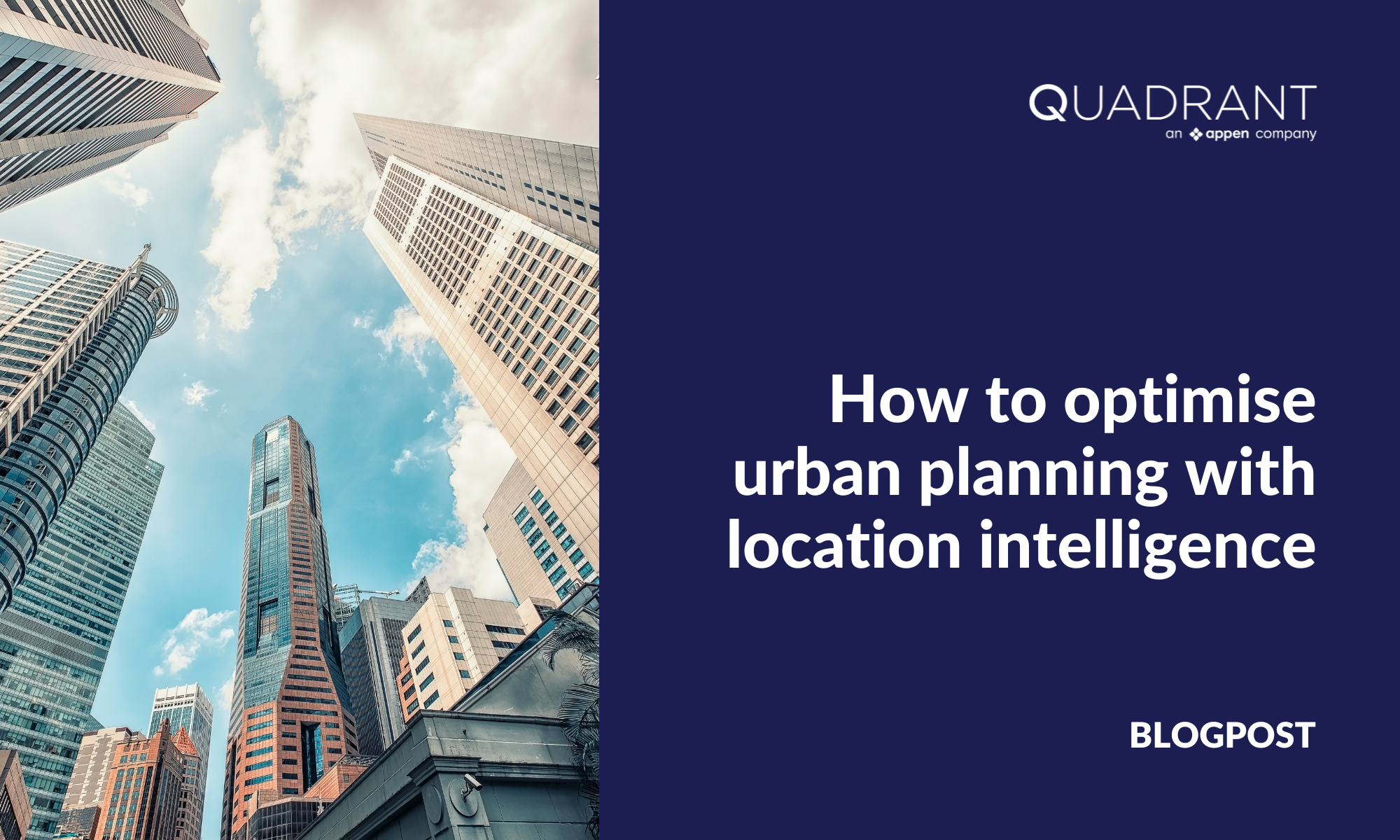The needs of urban communities continuously evolve due to socio-economic, geopolitical, and environmental changes. Therefore, the consistent development and redevelopment of cities is essential for addressing the changing needs of urban citizens.
Analyzing large-scale mobility patterns allows urban planners, researchers, and public officials to gauge how people’s behavior changes in response to various events and developments. It can also help determine which of their current needs cannot be satisfied through existing services and facilities.

Location intelligence is a powerful tool as it enables the creation and implementation of master plans that make cities more resilient and people-centric. In this article, we discuss how precise and comprehensive movement insights can help urban planners.
Why location data is an essential tool for urban planning
Traditionally, urban planners have utilised manual surveys and sensor data to collect information for their use cases. However, these methods are unreliable, time-consuming, and costly. As a result, they fail to provide a precise, holistic picture of movement - especially at larger scales. Additionally, these conventional tools rely on merging data from different sources like public directories, local businesses etc. This can result in the collection of sensitive data that puts companies at risk of non-compliance with data privacy laws.
Mobility analysis is the fastest, safest, and most accurate way to evaluate movement for studying behavioral patterns at various scales. Location data can be used to depict mobility patterns through visualization software or to power AI models for predictive analyses. Through granular geofences, location data can be used to generate mobility insights at the neighborhood level - which simply is not possible with conventional tools like surveys. Moreover, aggregated, anonymized, and ethically sourced data can help organizations leverage location intelligence without worrying about non-compliance.
Assessing public space utilization for urban development programs
Pandemic-induced movement restrictions caused a seismic shift in people’s movement patterns. We faced limitations on where we could work, where we could go, and how we could interact with one another.
Even though lockdowns have been lifted in most parts of the world, mobility patterns and the usage of places have fundamentally changed. Researchers, city architects, and public officials need insights from location intelligence to determine these changes and recommend urban development programs that accommodate them.
For example, researchers at the University of Auckland studied pre- and post-pandemic mobility patterns to identify urban hotspots and recommend measures to make them more engaging, safe, and accessible. By cross-examining behavioral insights against the distribution of existing services and commercial establishments, urban planners can also determine which projects deserve immediate attention.
Improving public transportation systems
Location data allows urban planners and transport economists to assess the effectiveness and accessibility of public transit systems and recommend measures to improve them.
By analyzing historical and current movement trends urban administrators can accurately assess the changes in commuters needs. The correlation can help them identify and remediate the shortcomings in public spaces, transit accessibility, and routing.
In a recent project, Innovate Mobility (a public transit consultancy), used location data to help the City of Fairfield understand the post-pandemic needs of commuters and secure a $1 million grant to redevelop public transit systems. In a similar use case, scholars from a public research university assessed the inequitable distribution of public transit facilities in Maputo (Mozambique) and proposed solutions to mitigate them.
Connecting rural and urban geographies
Citizens residing in suburbs and rural areas are heavily reliant on public transportation to neighboring cities. They require convenient transit to city centers to access employment opportunities, essential services and more that are not available within their communities.
Most location data vendors do not offer coverage for rural and suburban areas; therefore, it is challenging for governments and urban planners to employ a data-driven approach to improve public transportation infrastructure for such localities.
One of Quadrant's customers, Civillia - an urban mobility intelligence firm - uses location data to identify gaps in access to public transit across areas in Canada with low population density. They have leveraged mobile location data and sophisticated AI capabilities to study movement patterns. In doing so, they determined whether existing transit infrastructure fulfilled citizens' commuting requirements within the Quebec province and recommended improvements to enhance efficiency and improve ROI.
The use cases elaborated upon in this article are by no means exhaustive. Location intelligence is also used by urban planners for several other purposes such as bridging socio-economic gaps in access to essential services and improving disaster response plans. Location data is a must have tool in every urban planner's arsenal. With rapidly changing physical spaces it can provide the fastest and most reliable visibility into mobility in your area of interest.




